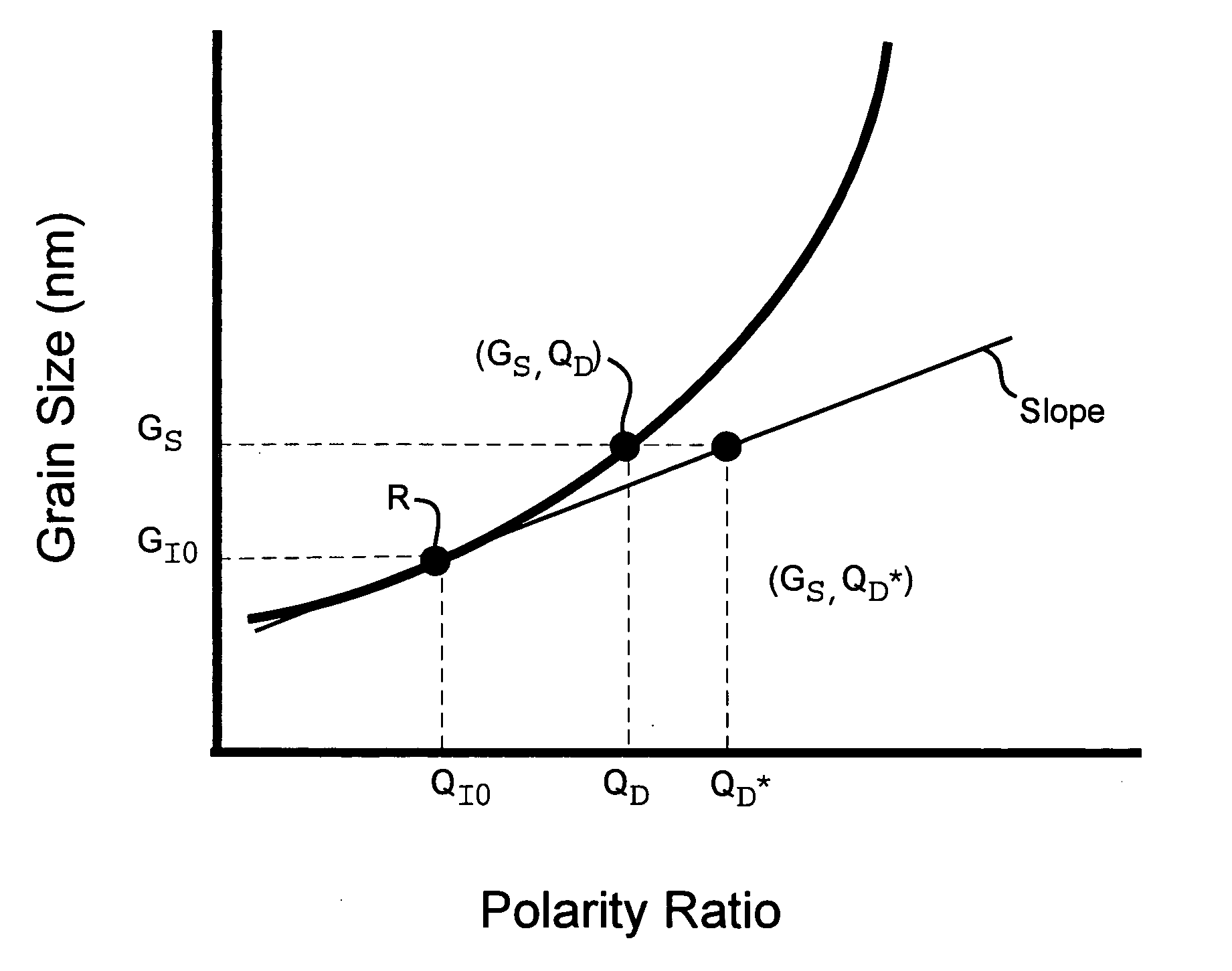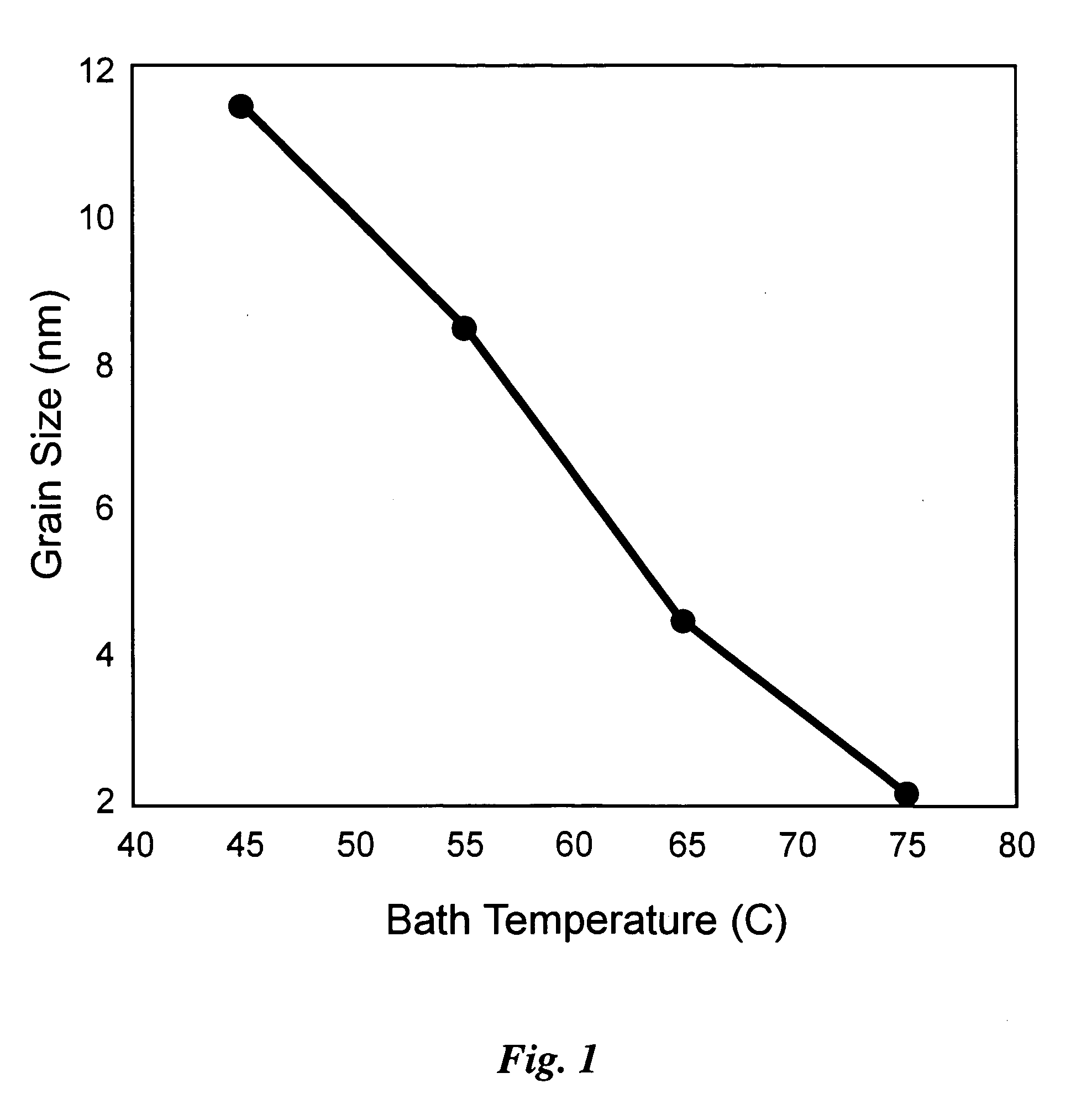Method for producing alloy deposits and controlling the nanostructure thereof using negative current pulsing electro-deposition, and articles incorporating such deposits
a technology of negative current pulsing and electro-deposition, which is applied in the direction of electrolysis components, electrolysis processes, transportation and packaging, etc., can solve the problems of limited shape, difficult processing of nanocrystalline metals, and limited compaction methods
- Summary
- Abstract
- Description
- Claims
- Application Information
AI Technical Summary
Problems solved by technology
Method used
Image
Examples
example
[0055] Using BPP to control crystal grain size in the nano-meter range has been reduced to practice, for instance for the particular case of a binary alloy of nickel-tungsten. This alloy was deposited with the liquid bath composition and plating parameters as given in Table 1, using an inert platinum electrode 342, nominally designated an anode and a copper electrode 340, nominally designated a cathode, in a 2 liter bath, as shown schematically with reference to FIG. 3. A pulsed current was used, having a negative current portion, the amplitude of which was varied for different specimen runs from 0 to negative 0.3 A / cm2 at a constant pulse time of 3 ms. The positive portion of the pulse always had an amplitude of +0.2 A / cm2, and a duration of 20 ms.
TABLE 1Deposition conditions for nickel-tungstenNickel sulfate hexahydrate (NiSO4.6H2O)0.06 MSodium tungstate hexahydrate (Na2WO4.2H2O)0.14 MSodium citrate dihydrate (Na3C6H5O7.2H2O) 0.5 MAmmonium chloride (NH4Cl) 0.5 MPositive pulse ti...
PUM
| Property | Measurement | Unit |
|---|---|---|
| Grain size | aaaaa | aaaaa |
| Polarity | aaaaa | aaaaa |
| Structure | aaaaa | aaaaa |
Abstract
Description
Claims
Application Information
 Login to View More
Login to View More - R&D
- Intellectual Property
- Life Sciences
- Materials
- Tech Scout
- Unparalleled Data Quality
- Higher Quality Content
- 60% Fewer Hallucinations
Browse by: Latest US Patents, China's latest patents, Technical Efficacy Thesaurus, Application Domain, Technology Topic, Popular Technical Reports.
© 2025 PatSnap. All rights reserved.Legal|Privacy policy|Modern Slavery Act Transparency Statement|Sitemap|About US| Contact US: help@patsnap.com



